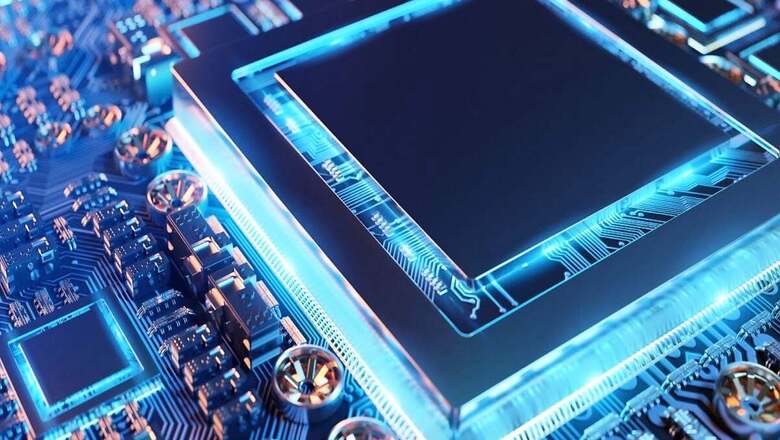
views
After major announcements for the semiconductor sector during Prime Minister Narendra Modi’s visit to the United States, the government is now expecting significant outcomes in the coming years.
It was confirmed recently that Micron Technology, Inc, will spend more than $800 million on a new $2.75 billion semiconductor assembly and test plant in India, with funding from the Semiconductor Mission in the next five years. The company will employ a workforce of 5,000 and create an additional 15,000 community jobs over the same period of time.
Applied Materials has also announced that it would establish a Semiconductor Centre for Commercialization and Innovation in India to diversify the countries’ semiconductor supply chains. This will include a gross incremental investment of $400 million over four years.
It was also announced that Lam Research will train 60,000 Indian engineers as part of its “Semiverse Solution” to help the country meet its semiconductor education and workforce development objectives.
Possible outcomes
The Indian government now believes that the approval of Micron’s proposal will help in creating the semiconductor manufacturing ecosystem and more job opportunities, both directly and indirectly in India.
The government said that the products produced by Micron will be used for local and global consumption, thereby reducing imports and increasing exports.
“Land allocation and factory design are already done. Within six quarters, Micron is expected to produce ‘Make in India’ chips,” said union IT minister Ashwini Vaishnaw.
In the case of Applied Materials, it is expected to bring together applied engineers, leading global and domestic suppliers of equipment subsystems and components, as well as top reach and academic institutions. The focus will be on accelerating the innovation and commercialisation of technologies needed to produce next-generation subsystems and components in the country.
The government believes that the initiative will serve as a catalyst for the training and development of future semiconductor talent, as well as open new opportunities for India to play a major role in the global semiconductor industry.
As per the government: “In its first five years, the centre would support more than $2 billion of spending expected to create at least 500 new advanced engineering jobs.”
About Lam Research, which is a global supplier of innovative wafer fabrication equipment and services to the semiconductor industry, the government expects that the first pilot project related to education and skilling the Indian youth will start in August this year.
The organisation’s “Semiverse Solution” offers a virtual nano-fabrication environment (SEMulator3D) which enables a transformational learning experience. It is believed that once it is integrated with the revised curriculum launched recently by AICTE, this programme will educate 6,000 or more engineers skilled in semiconductor nano-technologies annually and in the next 10 years.
“It will add a 60,000 trained workforce which has a $100 billion revenue impact for the semiconductor chip production industry which needs a skilled workforce,” the government noted.
Milestones and current status
Significant progress has been made since the announcement of the India Semiconductor Mission and the approval of the investment of Rs 76,000 crore to catalyse as well as expand India’s Semicon Ecosystem.
The milestones so far include:
- A vibrant Semicon Design innovation ecosystem rapidly growing with scores of new startups including 5 under the Semicon India ‘FutureDESIGN’ programme.
- Strategic Indian RISC-V programme to develop next-generation Digital India RISCV (DIRV) chips and systems.
- Semicon India FutureSkils launched to create 85,000 VLSI engineers as global talent, in the 2023 Academic Year semiconductor curriculum designed in partnership with global industry majors.
- Research and Development centres of every global semiconductor major in India.
- Micron packaging facility approved.
- Semicon India Complex modernisation and research fab and India Semicon Research Center are being finalised.
About the semiconductor industry, union IT minister Vaishnaw said on Friday that almost two years ago there was a race to achieve the smallest node but now the idea has changed.
“The way the telecom and EV industry has grown and the way semiconductors are found to be used in every electronic product, the industry itself is now considering that almost half of the semiconductor sector will be about mature nodes, which includes 14-16-28 nanometres. The rest of the semiconductor industry will be focused on smaller and cutting-edge nodes,” the minister explained.
Vaishnaw further spoke about the requirement for gallium nitride, well-suited for high-power transistors capable of operating at high temperatures and silicon carbide or SiC, which is also used in semiconductor electronics devices that operate at high voltages.
He stated that based on the understanding of the industry and the current requirement in September 2022 the government modified India’s semiconductor programme.
“We have asked the applicants who submitted their applications in January this year to modify the applications as per the requirements and resubmit them. They will now have the option to focus on certain sectors and find new technology partners,” said Vaishnaw.

















Comments
0 comment